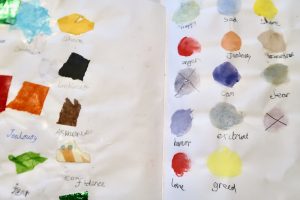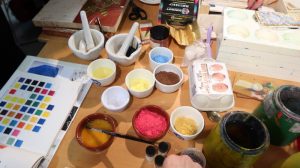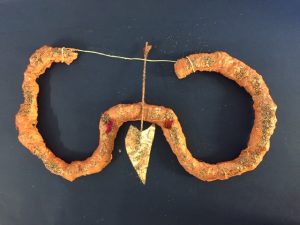Part 1: What Makes a Sketchbook “Exciting”?
<< back to "Sketchbooks!" course page
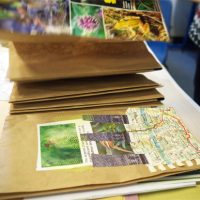
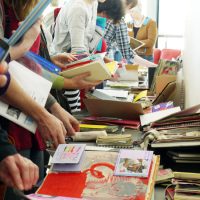
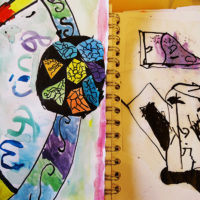



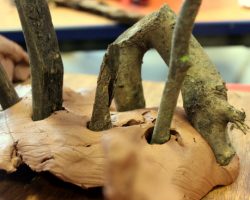 Artists Caroline Wendling and Deborah Wilenski encourage young children in a woodland exploration using art and imagination as their discovery tools.
Artists Caroline Wendling and Deborah Wilenski encourage young children in a woodland exploration using art and imagination as their discovery tools.
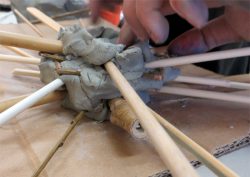 Paula gives children the tools to both draw and make. Children worked with hard and soft pencils, graphite, wax resist, watercolour, clay and sticks.
Paula gives children the tools to both draw and make. Children worked with hard and soft pencils, graphite, wax resist, watercolour, clay and sticks.
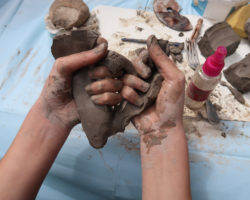 This resource, commissioned by Cambridge City Council, encourages being together through making and introduces the basics of working with Scolaquip air-hardening clay.
This resource, commissioned by Cambridge City Council, encourages being together through making and introduces the basics of working with Scolaquip air-hardening clay.
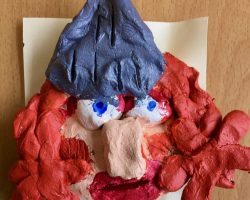 Primary school teacher, Sue Brown, shares her experience of an Ofsted Deep Dive in Art and gives advice to other teachers on how they might prepare themselves.
Primary school teacher, Sue Brown, shares her experience of an Ofsted Deep Dive in Art and gives advice to other teachers on how they might prepare themselves.
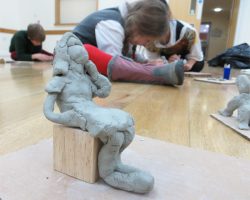 Paula provided young children with the opportunity to explore clay as a “short term” construction and modelling material. Without being fired, the dry clay has a limited lifespan, and the sculptures will crumble, but I think it’s important to remind oursleves that even without access to a kiln, clay can still be regarded as a valuable sculptural material.
Paula provided young children with the opportunity to explore clay as a “short term” construction and modelling material. Without being fired, the dry clay has a limited lifespan, and the sculptures will crumble, but I think it’s important to remind oursleves that even without access to a kiln, clay can still be regarded as a valuable sculptural material.
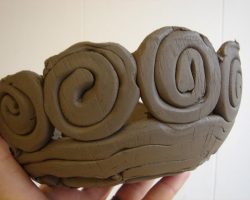 This simple clay pot making resource is not the traditional way of making coil pots but it’s lots of fun and by using different paint effects, the end results can be very interesting. We worked on this project for two, two-hour sessions.
This simple clay pot making resource is not the traditional way of making coil pots but it’s lots of fun and by using different paint effects, the end results can be very interesting. We worked on this project for two, two-hour sessions.
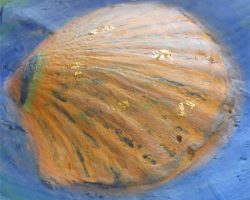 This resource describes how to create plaster reliefs using clay and foamboard moulds. It is based upon a session which took place at Bourn Primary Academy with a group of Year 5 children.
This resource describes how to create plaster reliefs using clay and foamboard moulds. It is based upon a session which took place at Bourn Primary Academy with a group of Year 5 children.
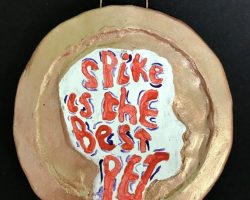 In this three stage resource, students make a circular medal from clay depicting their own profile, look at examples of fun lettering and devise a short, fun or meaningful phrase to paint inside their portrait profile. Clay art medals are a fun way to link class topics with an art activity.
In this three stage resource, students make a circular medal from clay depicting their own profile, look at examples of fun lettering and devise a short, fun or meaningful phrase to paint inside their portrait profile. Clay art medals are a fun way to link class topics with an art activity.
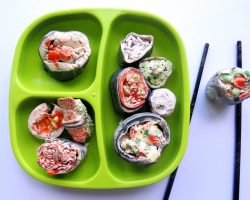 Inspired by research into Japanese culture, children explored the potential and limitations of paper and recycled materials, learning through play and experimentation to make 3D forms. The outcomes of this process were used to inform work created in a second medium of clay, using kitchen equipment to shape the clay and add textures.
Inspired by research into Japanese culture, children explored the potential and limitations of paper and recycled materials, learning through play and experimentation to make 3D forms. The outcomes of this process were used to inform work created in a second medium of clay, using kitchen equipment to shape the clay and add textures.
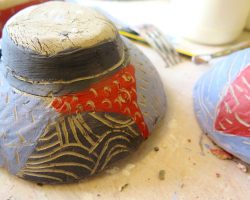 Jan shares a Year Three class project that uses the work of a contemporary Japanese ceramicist to inspire vibrant paintings in a variety of materials. The children then used their own art to design ceramic vessels.
Jan shares a Year Three class project that uses the work of a contemporary Japanese ceramicist to inspire vibrant paintings in a variety of materials. The children then used their own art to design ceramic vessels.
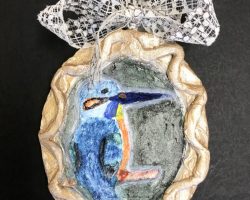 Portrait miniatures are small painted images, usually of monarchs and very wealthy, important people. Dating back to the 1520s, these tiny portraiture paintings are like medals, but with realistic colour. This two stage clay and painting resource is very versatile because essentially the miniatures are blank canvasses.
Portrait miniatures are small painted images, usually of monarchs and very wealthy, important people. Dating back to the 1520s, these tiny portraiture paintings are like medals, but with realistic colour. This two stage clay and painting resource is very versatile because essentially the miniatures are blank canvasses.
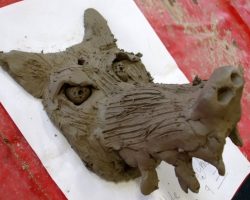 This resource explores how to make an armature and use clay slab to build a form. Based upon the legend of “Black Shuck”, a ghostly dog that roams the coast searching for its drowned masters, this project engaged the children and resulted in charismatic sculptures, but you could equally transfer the activity to other themes.
This resource explores how to make an armature and use clay slab to build a form. Based upon the legend of “Black Shuck”, a ghostly dog that roams the coast searching for its drowned masters, this project engaged the children and resulted in charismatic sculptures, but you could equally transfer the activity to other themes.
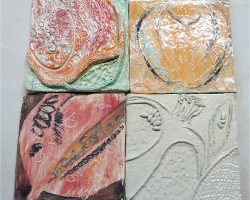 Ceramicist Rachel Dormor shares a workshop idea suitable for primary or secondary aged children. Working in clay, pupils take their inspiration from drawings of fruit to make decorative clay tiles.
Ceramicist Rachel Dormor shares a workshop idea suitable for primary or secondary aged children. Working in clay, pupils take their inspiration from drawings of fruit to make decorative clay tiles.
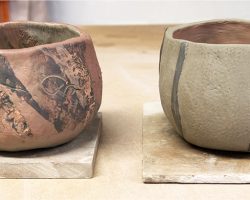 Ceramicist Rachel Dormor shares a workshop idea suitable for primary or secondary aged children. Working in clay, pupils take their inspiration from drawings of fruit to make simple pinch pot mugs.
Ceramicist Rachel Dormor shares a workshop idea suitable for primary or secondary aged children. Working in clay, pupils take their inspiration from drawings of fruit to make simple pinch pot mugs.
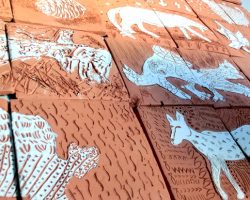 Sgraffito, or ‘scratching’ is a technique which is an excellent way to reinforce mark making with all age groups.
Sgraffito, or ‘scratching’ is a technique which is an excellent way to reinforce mark making with all age groups.
Drawing into leather hard red clay tiles to create designs using mark-making can be even more effective when done through a white earthernware slip to reveal the red clay beneath.
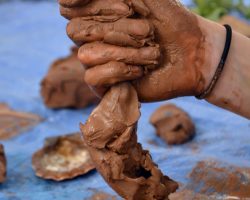 Sheila asked teenagers at AccessArt’s Experimental Drawing Class when the last time was that they had played with clay?
Sheila asked teenagers at AccessArt’s Experimental Drawing Class when the last time was that they had played with clay?
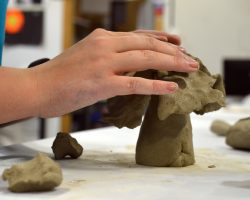 This post shows how to facilitate a sensory session exploring water and clay – by Sheila Ceccarelli (artist) and Yael Pilowsky Bankirer (Psychotherapist) for Arts and Minds.
This post shows how to facilitate a sensory session exploring water and clay – by Sheila Ceccarelli (artist) and Yael Pilowsky Bankirer (Psychotherapist) for Arts and Minds.
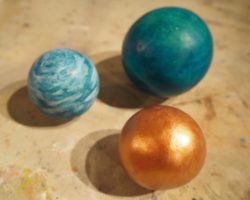 This post was inspired by the Japanese art of dorondongo, where mud and dirt are shaped and buffed into highly polished spheres. We made clay spheres and other simple forms in clay, and once dry, painted them with ink and acrylic.
This post was inspired by the Japanese art of dorondongo, where mud and dirt are shaped and buffed into highly polished spheres. We made clay spheres and other simple forms in clay, and once dry, painted them with ink and acrylic.
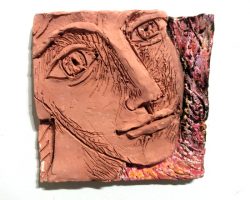 In this resource artist, Eleanor Somerset shows how she led students in The Little Art Studio, Sheffield, to explore and discover portraiture through various media.
In this resource artist, Eleanor Somerset shows how she led students in The Little Art Studio, Sheffield, to explore and discover portraiture through various media.
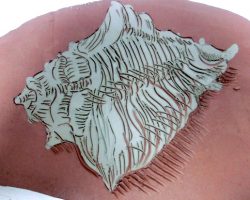 Further explore how to make beautiful sgraffito, or ‘scratched drawings’ with artist Eleanor Somerset.
Further explore how to make beautiful sgraffito, or ‘scratched drawings’ with artist Eleanor Somerset.
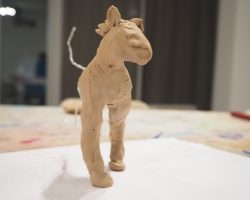 Artist Melissa Pierce Murray worked with teenagers from AccessArt’s Experimental Drawing Class on a series of workshops which physically explored drawing and sculptural responses to form, forces and anatomy.
Artist Melissa Pierce Murray worked with teenagers from AccessArt’s Experimental Drawing Class on a series of workshops which physically explored drawing and sculptural responses to form, forces and anatomy.
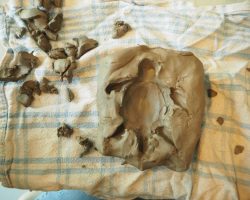 In this post, artist Melissa Pierce Murray, shows, step-by-step, how young teenagers explored plaster casting by making simple clay ‘waste moulds’ and then moved on to making simple ‘two piece moulds’.
In this post, artist Melissa Pierce Murray, shows, step-by-step, how young teenagers explored plaster casting by making simple clay ‘waste moulds’ and then moved on to making simple ‘two piece moulds’.
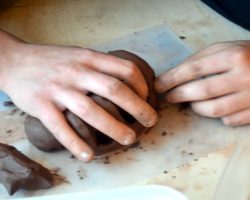 Resident artist at ArtWorks Studios, Cambridge, Rachel Wooller, introduces teenagers at AccessArt’s Experimental Drawing Class to the process of casting and creating negative shapes in plaster from clay positives.
Resident artist at ArtWorks Studios, Cambridge, Rachel Wooller, introduces teenagers at AccessArt’s Experimental Drawing Class to the process of casting and creating negative shapes in plaster from clay positives.
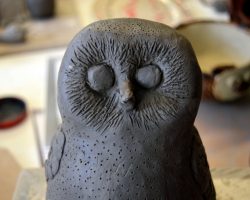 Abi, Sarah and students at Rowan Humberstone, show how they made clay birds using clay coiling techniques and with a plaster mould for the birds’ bases.
Abi, Sarah and students at Rowan Humberstone, show how they made clay birds using clay coiling techniques and with a plaster mould for the birds’ bases.
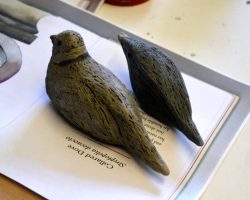 Abi and students from Rowan Humberstone, describe how they made clay birds from a plaster mould.
Abi and students from Rowan Humberstone, describe how they made clay birds from a plaster mould.
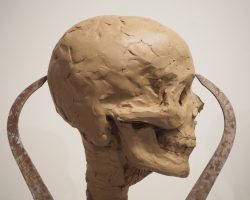 Artist Melissa Pierce Murray led a series of workshops for AccessArt’s Experimental Drawing Class in which the teenagers modelled a head in clay. There are five resources in this series, beginning with constructing an armature and making preparatory drawings, then studying the bone structure of the skull before moving on to features. The final post in this series looks at ways to increase the techniques and approaches used in drawing.
Artist Melissa Pierce Murray led a series of workshops for AccessArt’s Experimental Drawing Class in which the teenagers modelled a head in clay. There are five resources in this series, beginning with constructing an armature and making preparatory drawings, then studying the bone structure of the skull before moving on to features. The final post in this series looks at ways to increase the techniques and approaches used in drawing.
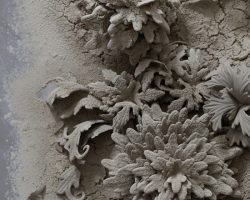 Students, from the DesignLab at the V&A, London, worked with artist Phoebe Cummings over a three month period to create a site-specific, group piece, from unfired clay which was inspired by the historical 2D designs found on 19th century British tableware in the collection.
Students, from the DesignLab at the V&A, London, worked with artist Phoebe Cummings over a three month period to create a site-specific, group piece, from unfired clay which was inspired by the historical 2D designs found on 19th century British tableware in the collection.
On Tuesday 3rd of December 2019, there was a very special visit to the Fitzwilliam Museum, Cambridge, arranged by Sarah Villis, Holly Morrison and Kate Noble from the museum’s Education Team.
A group of pupils from two primary schools in Cambridgeshire were invited to see behind the scenes at the Fitzwilliam Museum, Cambridge and the installation of Inspire – an exhibition of children’s artwork in the Octagon Gallery in the museum from the 10th December 2019 until 22 March 2020.
These pupils are young artists who have had their artworks selected to be exhibited alongside the Renaissance painting of Cupid and Psyche by Jacopo Del Sellaio; Year 4 and 5 pupils from the Brilliant Makers Club, at Morley Memorial Primary School, Cambridge with their teacher Maya Dalby; and the The Fitzy Peters, a group of Year 5 pupils from St Peters C of E Junior School, Wisbech, Cambridgeshire, with their teacher Natalie Bailey and head teacher Amy Harvey.
The day-long session was facilitated by Holly Morrison.
The pupils were greeted by the museum staff and Holly took them on a tour through the museum on their way to the Octagon Gallery, where their work was being installed by Charis and Jamie.
Brilliant Makers at Morley Memorial created Magical Cupid’s bow and arrows in mixed media for Inspire.
‘Focusing on the theme of ‘change’ and ‘love’, the group discussed inspirational people who were changing the world for the better. The children decided what positive change they would make if they had a magical Cupid’s bow and arrow to shoot into the world. Responses ranged from arrows that stopped deforestation to arrows that helped people read.’ Maya Dalby, Art Coordinator and Year 5 teacher at Morley Memorial School, Cambridge
This was also a chance for children to see other children’s work and behind the scenes at the Museum.
The children then went to the Seminar Room, where Holly had an afternoon of creative activity planned out for them, but first a chance for the Fitzy Peters to introduce the others to ‘The Resilience of Psyche;’ Psyche’s dress which they had made over several sessions with their teacher Natalie Bailey.
‘A group of children, The Fitzy Peters, became fascinated by Psyche’s resilience during her period of grief and loss and made significant connections to the story during our PSHE lessons. We decided to extend the children’s learning by running a Summer holiday project. The children decided to tell the story of Psyche through a dress designed especially for her at Studio 15 in Wisbech. What surprised me the most was how much art helps children to communicate and express thoughts, feelings and emotions.’ Natalie Bailey, Year 5 Teacher and Art Lead
‘The main fabric is denim, we thought this showed resilience. It’s tough and can take the harshness of life. The underneath of the dress is soft, white tulle showing Psyche’s soft innocent side. Every single part of the dress has a message, a reason for being there.’ Tomasz, aged 10
The Resilience of Psyche can be seen from the 10th December 2019 until the 22nd March 2020 in the Armory at the Fitzwilliam Museum, Cambridge.
Inspire – December 2019 to March 2020, was an exhibition of art made by primary school children and celebrated creativity in Cambridgeshire schools. It championed the on-going importance of cultural learning and the visual arts for all children and young people.
Based on the National Gallery’s Take One Picture, The Fitzwilliam Museum and AccessArt teamed together to offer free Inspire 2020 CPD (Continued Professional Development for Teachers), focusing on one painting, Cupid and Psyche by Jacopo del Sellaio, as a source of ideas and inspiration.
Del Sellaio’s Cupid and Psyche was on display next to the children’s work in the Octagon Gallery.
With very special thanks to Kate Noble, Miranda Stearn, Sarah Villis, and Holly Morrison for making this project happen and Alison Ayres.
This post was written by Sheila Ceccarelli.

